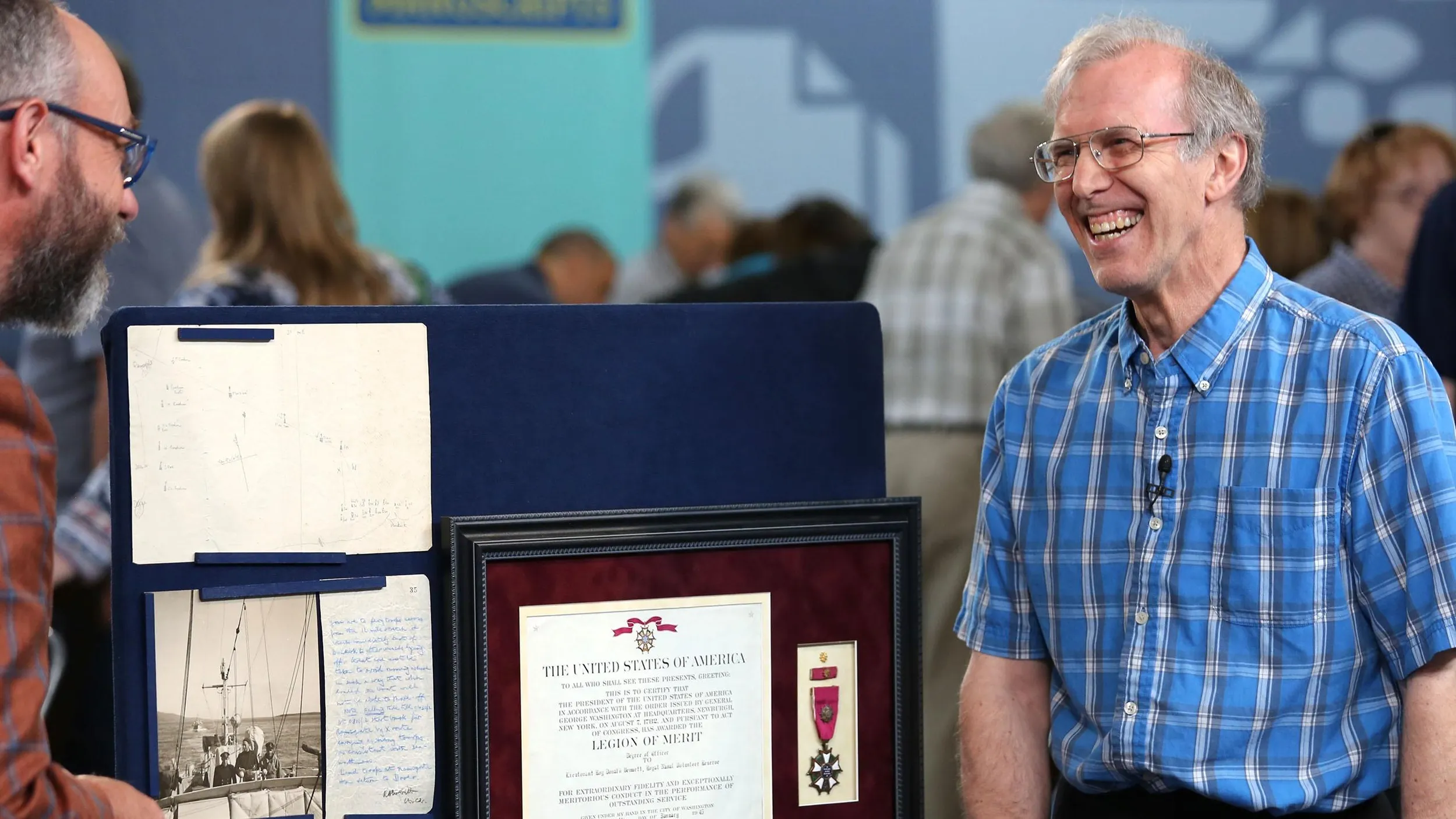GUEST: My parents bought it at a sale. It was in an old outbuilding, it was all wazzled up in the corner. It got rained on. And my father, who's a Civil War nut, went bananas and had to buy it. The upper corner had been torn, and there was water damage, so my mom and I went to a fine arts restorer and we had it restored.
APPRAISER: Okay, and your parents were downsizing, so...?
GUEST: They were downsizing and they asked me if I wanted anything, and I said, "I want the map."
APPRAISER: Okay.
GUEST: "Name your price, I'll pay it." And all they wanted was what they paid for it at the sale, which was $180, and then the cost of restoration, $2,100, so...
APPRAISER: You paid the combination of the two of those, all-righty.
GUEST: I paid the combination of the two, and here it is. I love these inserts, I love the pictures: the Washington Monument, the Capitol, and a Mount Vernon. I just... I think it's beautiful, everything about it. I just keep seeing things that I haven't seen before on it.
APPRAISER: I love wall maps in general. This is a particularly wonderful wall map, and there are lots of things about it that I like. As part of the Union message, the patriotic message, the insets actually were of national monuments, or national sites, including, for instance, the Washington Monument, which at the time was being built. It wasn't completed, but they wanted to show it completed.
GUEST: Okay.
APPRAISER: And of course...
GUEST: His picture.
APPRAISER: The man himself, right in the title. A wall map like this is a snapshot of a period of history. And with all this information, this is a particularly good snapshot of the United States in 1861. What happened in 1861?
GUEST: The start of the Civil War.
APPRAISER: The start of the Civil War. And one of the interesting things on this map is right down here, it lists the slave states.
GUEST: Yeah.
APPRAISER: And right underneath that, it has text that says the ones with an asterisk "claim to have seceded from the United States." Because of course this is a map made in... for the Union, they didn't recognize that secession.
GUEST: Okay.
APPRAISER: Now, because of that secession, this map catches another important part of the United States, the development of the American West. The United States, moving to the West in the '50s and early '60s, there was a lot of people out there who moved into places that were in the far parts of territories. They wanted their own local governments. So they kept petitioning Washington saying, "We want a new territory, we want a new state." Congress couldn't do it because the Southerners said, "You can't do that because it'll be a free state. We don't want any more free states." They left in 1861, the Southern Congressmen. All of a sudden the Northerners controlled Congress. 1861, three new territories were made right away. And they appear on this.
GUEST: Oh.
APPRAISER: One is Dakota, which you can see is huge at that stage.
GUEST: Huge, yeah.
APPRAISER: Okay, Nevada, on the other side of Utah, and then, finally, Colorado. 1860, those three territories didn't exist. Southerners left, three new territories, bam bam bam. Now, you paid a total of about...?
GUEST: $2,500.
APPRAISER: You did very well on that.
GUEST: Yep.
APPRAISER: In a retail environment, in a shop, this would sell for about $4,500 to $5,000.
GUEST: Oh, okay.
APPRAISER: So you did very well.
GUEST: Yeah, that's good.



